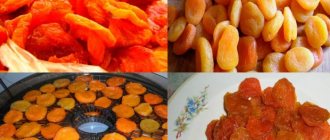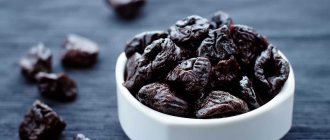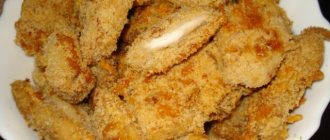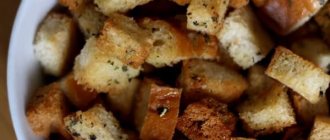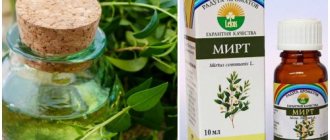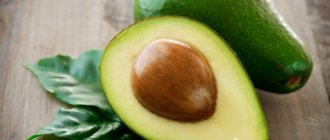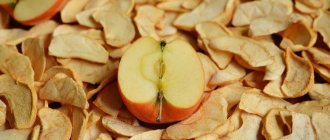There's nothing better than a snack between meals, right? And dried apples are a great alternative to chips or sweets. However, the ones on supermarket shelves are a little more expensive. Moreover, they often contain sugar and artificial preservatives. Therefore, dry the apples yourself and be sure not only of excellent taste, but also of a large dose of essential vitamins. This food is recommended for people who react to stress by overeating sweets - it helps suppress the feeling of hunger, while less sugar enters the blood, and numerous B vitamins additionally take care of the nervous system. This appetizer is really very easy to prepare!
Preparing apples
For drying, it is better to pick apples from a branch, because fruits that have already fallen from the tree produce not so high-quality dried fruits. Ripe and fresh fruits are dried - they contain the most valuable ingredients. They should not be overripe. For drying, choose large and medium-sized fruits that are even in shape, undamaged, not affected by pests, and without signs of rotting or drying out. The healthiest fruits, of course, will be from organic gardens or from a farm store.
The weight of apples when dried decreases by 6-7 times, so to obtain 1 kg of dried fruit you need 6-7 kg of fresh fruit.
You can experiment a little with flavors. Some of the slices should be dried without additives, and some should be rubbed with seasoning. Spices such as cinnamon, cardamom and ginger are great here.
Preparation process:
- We thoroughly wash the apples under running water, wipe and peel them. The skin of sour varieties is thick and hard, which makes it difficult for moisture to evaporate from the pulp, and after drying it is tasteless. Summer apples can be dried with the peel on because they are very tender.
- If the fruit is not intended for compote, the seed nests are removed. After washing and peeling, the fruits should be cut into slices or circles of the same size and thickness max. 5-7 mm.
- To prevent sliced apples from darkening, quickly place them in cold water, slightly acidified with lemon juice or acid, for 10 minutes (2 teaspoons of citric acid per 5 liters of water). After drying, the slices will become lighter.
- Briefly blanching fruit is believed to shorten the drying process. There is no need to blanch; in addition, it worsens the taste of dried fruits and leads to loss of vitamins and minerals.
Culinary tricks
Sour apples darken when cut. This has nothing to do with the presence of iron in fruits; there is negligibly little of it. The rusty color results from the interaction of antioxidants and polyphenol enzymes in air. Immersing the raw material in a weak solution of citric acid or vinegar .
Some chefs advise dipping the slices in a salt solution , but this may affect the taste of the product.
Blanching also helps to lighten the product, and at the same time makes the fruit less rough . This is often done with the fruits of small-fruited game, china, and ranetka, which are later used for candying entirely, without cutting.
Candied apples serve as a delicious decoration for various dessert dishes.
The raw materials are placed in a sieve or colander, poured over with boiling water or placed in boiling (sometimes sweetened) water for one or two minutes. When cooked, the enzymes that cause the darkening of the fruit disintegrate. Color does not affect the taste or drying time in any way. The thickness of the slices is much more important.
How and what to cut
When choosing a cutting method, housewives figure out in advance what recipes and dishes the dry preparation will be used in: in filling pies, for preparing refreshing drinks, compotes, jelly, as an ingredient in muesli, as snacks - an appetizing and healthy snack to satisfy a slight hunger in ways.
If you want to get presentable-looking pieces for decorating baked goods, the peel is usually peeled off. When dried, it shrinks the pulp, the slices turn out wrinkled and twisted. Autumn apples dry faster, winter apples take a little longer, so it makes sense to cut them into thinner slices.
Typically, 8-10 kg of raw apples yield approximately 1 kg of dried apples
Various devices and tools for curly cutting help to quickly clean and prepare large quantities of fruit for cooking. Slicers for obtaining slices of equal thickness and peelers - mechanical machines that remove thin spirals - have proven themselves well. It is especially convenient to use models that are securely attached to the table surface with suction cups or a clamp.
Holding tongs with slots will protect against accidental cuts, but they are not suitable for large specimens. It makes sense to buy an option with an automatic clamp to free up your hands.
The cutter in the form of a circle with blades located in the center allows you to divide the fruit into 8 equal parts in one movement; in addition, it is equipped with a hole with sharp edges for cutting out the core.
A calibrating knife with a wave-shaped blade can be used to cut corrugated slices and translucent “chips”; to cut long “petals” you will need a knife with a narrow curved blade.
Apple chips are prepared for adding to salads, pancakes, cheesecakes, and brewing fruit teas.
The fruits are chopped into pieces using a shredder or a roko vegetable cutter; a small amount of apples can be grated by hand on a coarse grater. The resulting mass is dried under the same conditions as cut into slices or circles, taking into account that the straw dries much faster.
What varieties of apples are suitable for drying?
All types of apples can be dried, but winter sweet and sour varieties, not very juicy, with dense pulp, are best suited. Summer ones can be used for drying in the sun. However, sweet apples often lack a distinct flavor when dried and become sticky. Fruits collected from wild trees are ideal for drying. The apple varieties Antonovka, Melba, Jonathan, Babushkino, and Aport are very good for drying.
Supplementing your daily diet with delicious apple chips helps:
- strengthening the immune system;
- regulation of intestinal function, normalization of blood pressure, water and electrolyte balance;
- hematopoietic processes;
- reducing blood cholesterol;
- cleansing the body of toxic substances;
- prevention of cancer and cardiovascular diseases;
- maintaining the proper condition of blood vessels, skin, hair and nails;
- maintaining good mental state and intellectual fitness.
Features of the choice of raw materials
For dry preservation, it is worth taking fruits with a dense pulp consistency and a sweet and sour taste, ripening in periods from early autumn to early winter, for example, “Aport”, “Antonovka”, etc. Their pulp contains a concentration of dry substances, pectin (soluble fiber fibers), there are more organic acids than in juicy summer varieties. The sugar content in sweet specimens drops noticeably after drying, so when finished, they taste bland.
During preparation, the raw materials are sorted, washed thoroughly, spoiled areas, seed pods, and stalks are cut out.
In the oven of a gas stove
The most convenient way for a city dweller to dry apples (in the absence of an electric dryer) is in the oven of a gas stove.
- Before starting the process, the oven must be heated over low heat to about forty or fifty degrees.
- Then you need to prepare a baking sheet. To do this, place a sheet of baking paper or parchment on it (be careful not to leave the edges of the paper sticking out, otherwise they may catch fire).
- Place the apple slices or rings in one or at most two layers on a baking sheet and place in the preheated oven. If it is large, you can use two baking sheets, but then you will have to turn them over several times during the drying process.
- Sliced apples can be placed on a wire rack instead of a baking sheet if it is not lined with paper. In this case, the drying process will go faster, and the apple slices will dry evenly on all sides.
- When the apples are placed in the oven and juice begins to release from them, you need to gradually increase the heating temperature to sixty to eighty degrees.
- To reduce humidity in the oven, keep the door ajar.
- Properly prepared dried apple slices should remain slightly golden, elastic, and when bent, should not crack, crunch, or release juice.
To speed up the process, washed, well-dried fruits, cut into slices or quarters, are dipped in boiling water and boiled for about six minutes. Then the apples are removed and washed under running cold water. Once the slices have cooled, pat them dry with a paper towel to remove any water. Then the pieces are placed on a baking sheet. The drying process will be halved.
Late apples are dried in winter, cut into slices, and small ones are placed whole on aluminum foil on a hot stove.
What can you make from dried apples?
Usually compotes are made from dried fruits. They turn out very tasty and aromatic. In addition, they can be used to make tea. The apples are simply placed in a cup and poured with boiling water, after which they are left to infuse a little. Or they are added to the teapot with any other type of drink.
Cooks often use dried apples as a filling for pies, muffins, and so on. You can make jelly and various desserts from them. Some people even manage to make soups from such preparations.
Dry fruits can be eaten just like that - for example, added to porridge. They often replace chips, which makes the snack healthier. Experts advise that in case of frequent stress, do not eat it with sweets, but replace it with dried fruit. Vitamin B, which is part of the fruit, will improve the condition of the nervous system.
Nutritionists recommend eating 75 grams of dried apples per day. It's like two fresh ones. The benefits of such a simple treat are obvious.
Drying apples on a string
Apple rings can simply be threaded on a thick thread, like mushrooms, and hung in the sun. Or threads with strung slices are hung over a gas stove with all burners turned on. Drying time is approximately 4 hours.
In the same way, thin pieces strung on threads are dried like mushrooms over a wood-burning stove (in old private houses or in a gazebo on a personal plot).
How to dry at home
If the weather outside does not allow you to take the fruit out into the sun, you can dry the apples at home.
You will need some space where the apples will be laid out.
The disadvantages of this method are the very slow drying speed and the constant appearance of many midges.
In addition, this method is suitable for residents of private houses, who can lay out apple preparations on the veranda.
If you live in an apartment and want to get dried fruits, then use an oven, electric dryer or microwave.
Drying apples in the sun
- If the fruit is dried in the sun, the cut slices are placed in cool water with table salt for 5 minutes (a tablespoon of salt per 1 liter of water). Salt protects them from insects and also has a preservative effect. Sun-dried apples should be covered with an airy cloth to prevent flies from laying eggs on them.
- Drying can only be done in the fresh air on dry and hot days. The process in active sun takes 3-5 days, in a shaded place about 10 days. Place the wedges on baking sheets or on a wire rack and turn each day. The trays are covered with gauze to prevent the dried fruits from becoming dusty.
- The fruits are not left outside overnight due to possible moisture. Dried apples are brown in color, but the natural change in color during drying does not affect the taste of the dried fruit.
Answers to frequently asked questions
As a small FAQ, we will look at some of the most exciting topics about drying apples.
What to do if apples get caught in the rain outside
Fruits are often dried outside. No one is immune from the fact that it will rain unexpectedly and get the food wet. What to do next?
In general, soaked dried fruits can be dried. Of course, if they haven't started to rot.
But there is a point here. The environmental situation now leaves much to be desired. Therefore, along with rain, slags, toxins, and chemical processing waste fall out.
If you are not afraid of this, you can dry apples that have been caught in the rain.
If you care about your health, then it is better to throw out such dried fruits and start preparing a new batch of product.
Is it possible to dry unripe apples?
Unripe apples can be dried. Of course, if they are not completely green. Dried green fruits can be used to make compotes, but it is better together with other fruits, as unripe apples will sour.
What is the yield of dried apples
One of the most pressing questions regarding the procedure is the overall yield of apples.
Of course, the volume and weight of the fruit will be significantly reduced. After all, apples are a very juicy fruit with a high liquid content. During the drying process, fruits lose about 75-80% of their weight.
On average, it is believed that 1 kg of fresh fruit produces 130 grams of dried fruit.
How to dry apples in the microwave
You can dry a small amount of apple slices in a microwave oven in a short time. The main thing is to choose the right power and drying time so as not to burn valuable fruits. Therefore, they should be dried in two stages:
- Place thin slices on a plate in a single layer and place in the microwave. Set the timer for 30-40 seconds and the power to 250 watts.
- After this time, remove the plate with dried fruit and turn the slices over. Set the time to 3 minutes, and increase the power to 300 W. To obtain apple chips, dry the slices for another 20-30 seconds.
Beneficial features
It is important to understand the benefits of dried apples. The rich composition determines the benefits of dried apples for the human body. The beneficial effect on all systems of the human body makes them healthier.
- The heart and blood vessels cannot do without potassium, magnesium, sodium, which are contained in dried fruits. Dry fruits prevent atherosclerosis, coronary heart disease, heart attacks, strokes, and help even out the heart rhythm. After a heart attack, they help restore strength and strengthen the heart.
- The stomach and intestines need fiber and pectin. Thanks to apples, intestinal motility improves, which promotes regular bowel movements and eliminates constipation. The microflora becomes healthier - the whole body works more clearly and harmoniously. Dry fruits are a natural sorbent: they remove harmful substances from the body.
- Vitamins are necessary for immunity. In dried fruits, the percentage of most of them increases. Therefore, dry fruits fight viruses, infections, and prevent vitamin deficiency. This is especially important during epidemics, in autumn and winter. Eating affordable treats can replace expensive vitamin supplements.
- Skin and hair require calcium and antioxidants. The calcium contained in dry fruits strengthens nails and hair. Antioxidants prolong their youth, improve their condition, prevent skin aging, and rejuvenate it.
- For allergy sufferers, eating dried fruits will be beneficial, as the product can alleviate allergies.
- For a nervous system prone to stressful situations, drying will be beneficial: its regular use has a calming effect and improves sleep.
- For a figure you need to consume natural products. Dry fruits dull the feeling of hunger; they will replace buns, chips, crackers, and will become a healthy alternative to other foods during snacks.
Drying in an electric oven on a baking sheet
The tray is lined with baking paper, and sliced fruits are placed on it in one layer. They can be lightly sprinkled with ground cinnamon, ginger, cardamom, marjoram, ground black pepper or a little thyme. But most often apples are dried without spices.
- The oven temperature is set to 70 °C.
- The baking sheets with apples are placed in a preheated oven, after half an hour the temperature is reduced to 40 °C.
- The pieces are then dried with the oven door slightly open to remove steam.
- After about 3 hours, when half the moisture in the fruit has evaporated, turn the slices over so that they dry evenly on both sides and continue drying.
- From time to time you have to check the oven; if it is very damp, you should turn it off for a while and open the door wide.
- As soon as the dried fruits stop releasing juice, crumbling and breaking when pressed with a finger, and become flexible and not sticky, they can be removed from the oven and cooled. Well-dried food is evenly colored and has a beige color. Baking time for apples in the oven is 6-8 hours.
To keep the fruit crisp, leave thin slices in the oven for a long time, turning occasionally. This is how apple chips are made. Chips are higher in calories than soft dried apples.
Apple chips
You can make delicious and healthy chips from apples. You can use spices at your discretion to ensure that the taste of the finished product is as varied as possible. You will need an oven with a grill mode.
Ingredients:
- apples – 1 kilogram;
- lemon juice;
- sugar;
- cinnamon.
Preparation:
- Wash the apples and remove the middle. Chop into medium-sized slices.
- Wash the pieces in cold water and transfer to a towel. Wait until they dry.
- Place the microwave on grill mode. Place the apples overlapping on the grill. Sprinkle with lemon juice and sprinkle with cinnamon.
- Leave the apples for 15 minutes. The finished slices should be dark and crispy. If necessary, the drying time can be increased. It is also recommended to turn the pieces during cooking.
- When serving, sprinkle the chips with sugar to make them even more delicious.
How to properly dry apples in an electric dryer
Drying in an electric dryer is considered the best method. It is relatively quick, convenient and easy compared to air drying or oven drying.
- Place the sliced apples in an even, thin layer on dehydrating trays. It is important not to place them too tightly so that hot air can circulate freely between them.
- Drying at a temperature of 65-70 degrees takes approximately 8-10 hours. Rotate the pans occasionally to ensure even cooking as the slices cook faster on the bottom pan.
- If you need to turn off the dryer before the fruit is fully cooked, open the lid or unfold the trays, otherwise the apples will get wet again.
Drying time largely depends on the juiciness of the apples, the thickness of their slices and the model of the dryer, so you should periodically check their readiness. Only through experience will you determine the optimal cooking time for dried fruits.
Storing finished dried apples
As soon as the fruits are ready, it is recommended to put them in a paper bag or jar. You can also use a cardboard box. The storage room should be dry, the optimal temperature is room temperature. It is very important that the workpiece does not become raw. This can ruin it, sometimes it even becomes moldy under the wrong conditions.
The product should be kept away from foods or herbs with strong odors. Otherwise, the apples will quickly absorb someone else's aroma. If you comply with all the conditions, the workpiece will quietly lie for a year or more without losing its beneficial properties.
How to tell if apples are dry or not
The finished dryer should be elastic, not release moisture when pressed, and not stick to your fingers. But, if the slices are too brittle and dry, then you can use them, but there will be much less vitamins in such a product.
Dried fruits can be stored in cotton and paper bags, glass jars with tight lids. Plastic bags and containers are not suitable for this, as they may grow mold or attract insects. Store packages of dried fruits in a cool, dry place, protected from the sun. For example, in the closet, not in the refrigerator. By drying fragrant apples for the winter, you can prepare delicious compote, porridge, and flat cakes for your family. And chew apple chips with hot tea.
Common mistakes
- Apples are poorly prepared for drying. Here we can mention both insufficiently thorough washing of the fruit and the leaving of the core.
- The fruit is cut into slices that are too large. The optimal thickness is 5-7 mm. Thicker pieces will take much longer to dry. In addition, there is a risk that the middle of the workpiece will remain completely raw.
- The apples are drying out. Inexperienced gardeners believe that dried fruit should have dark flesh and be brittle. But that's not true. Ideal drying, when the slice has light flesh, retains its elasticity, but does not release juice and does not stick to your hands.
- Undried slices are stored for storage. An under-dried product is the source of all sorts of problems when storing dried fruits. Sooner or later it will begin to rot and ruin the entire batch of dried apples.
- Storage in plastic bags or plastic containers. To prevent dried fruits from spoiling, they must be stored in a dry, dark, cool place. Storage containers should be wooden, paper, canvas or glass. Storage in plastic or cellophane bags is unacceptable. The product will spoil. You can put some of the dried fruits into bags if you plan to use them in the near future, but such materials cannot be used for long-term storage.
- Apples are dried in several layers. The fruit will dry unevenly. There will be specimens that are well dried and those that will stick to your hands and release juice.
How to select and prepare apples for drying
Ripe fruits of good quality are suitable for drying. The better the raw materials, the better quality the dried fruits . Do not chase large apples; it is better if they are medium and small in size. The skin of the apples should be thin, the seed box should be small. Remember that any homemade preparations mean saving money, so there should be as little waste when processing apples as possible.
What varieties of apples are best suited for drying?
It is best to choose sweet and sour autumn varieties, since such apples, after drying, retain their taste better than sweet ones.
The best foreign varieties are Gala, Fuji and Golden Delicious . From our apples, choose Antonovka, Pepin and Aport .
And also, if you have tasted delicious and aromatic dried apples somewhere, try to find out what variety was used for drying. And use these fruits for your preparations.
How to prepare apples
Option for cutting apples for drying - into circles with core
For drying, apples can be cut into slices, removing the seed box.
How to know when dried fruits are ready
The readiness of dried fruits is determined by two methods - tactile, by pressing a finger on a piece of apple, and also visual. If the apples have darkened, do not stick, but at the same time bend well and are moderately elastic, then it’s time to pack the product into jars.
It’s not scary if you dry apples, and then, when you finish drying the apples, you see a non-uniform color. It depends on the variety. Winter apples are more sour and therefore darken more intensely than summer apples. But late-ripening ones need to dry longer. Among other things, additional processing also affects the tone. If the apples are blanched in an acidic or salted solution, they will be creamy or beige. Ignoring blanching will result in a darker, rustier color. In addition, vitamins are not retained in overly processed and dark foods.
Benefits and harms, contraindications for use
Dry apples will be beneficial in the following cases:
- for irregular bowel movements, edema, excess weight: the diuretic effect, which improves digestion, helps remove excess fluid, get rid of toxins, and improve metabolic processes;
- with high cholesterol levels: microelements cleanse blood vessels, liver, gall bladder, improve heart function;
- to restore joints you need calcium, which relieves inflammation and strengthens bones: this is important for arthritis, arthrosis, osteochondrosis;
- weak immunity is enriched with a vitamin complex of dry fruits, replenished with useful substances;
- for anemia, dried apple fruits improve blood composition, increase hemoglobin levels, and relieve dizziness;
- for diabetes: the low glycemic index of the product maintains sugar levels within normal limits, metabolism improves, carbohydrates do not turn into fat;
- Regular consumption of dried apples in old age, during times of mental and physical stress, will help maintain memory, attention, and slow down the aging process.
Drying can be harmful. Dried fruits are not recommended for use by people during periods of exacerbation of pancreatitis. An alternative would be dried compote, which will replenish the supply of vitamins and other valuable substances.
For gastritis or ulcers, dried fruits will become an irritant to the mucous membrane, so it is also better to avoid eating them. Individual intolerance to the product, fresh and dried, forces people prone to allergies to exclude dried fruits from the diet. Diabetes forces you to be careful when consuming dried fruits due to their high sucrose content. The conversation is about abuse of the product. A reasonable amount of dried apples on the menu will be beneficial.
It is important to know about the benefits and harms of dried apples for the body.
For pregnant and lactating women
Dry apples will only bring benefits to pregnant and lactating women. Consumption of the dried product during pregnancy will improve the health of the expectant mother and the fetus, which will develop stable immunity.
It is better to prepare dried fruits yourself: store-bought fruits can cause allergies due to the chemicals added to them, which enhance the taste and extend their shelf life.
It is useful to drink compote made from dry apples and rose hips regularly, 2-3 glasses a day.
Taking compote also has a positive effect on lactation; milk is supplied with useful substances, which then enter the child’s body.
Regular consumption of dried fruits will relieve a pregnant woman from swelling and soften the manifestations of toxicosis.
The only condition: observe moderation in everything. Dried fruits are a high-calorie product, so excessive consumption can lead to significant weight gain. It is important for nursing women to monitor the reaction of the newborn so as not to miss allergies or digestive problems. A new product should be introduced into the diet gradually, in small portions.
Can I give it to a baby?
Dried fruits should not be given to infants. The reason is the slow digestion of the dried product, a high load on the newborn’s stomach, for which he is not yet ready. A small child can choke on dry fruits - this is very dangerous.
Dry fruit compote is introduced into the baby’s diet at the age of six months. It should be given first one teaspoon at a time, gradually increasing the volume to 100 ml per day. Before introducing a new product, you need to consult a pediatrician.
For diabetes
Failures in metabolic processes in the body, when the correct combination of carbohydrates and water is disrupted, lead to diabetes. The disease disrupts the functioning of the pancreas. Therefore, it is recommended to consume dried fruits carefully, in small portions.
You shouldn’t give up dried apples completely. The composition of the product is useful for people with metabolic disorders. A low glycemic index, no more than 25 units, will not lead to a sharp increase in sugar levels.
Diabetics benefit from drinking dried fruit compotes, adding sugar in small doses or doing without it altogether.
Before eating dried apples, you should consult an endocrinologist.
When losing weight
Despite the increased calorie content of the product, dry apples are recommended if you want to lose weight. You won't be able to eat too many of them. But they will remove accumulated toxins from the intestines and saturate the body with useful substances and vitamins.
Eating dried fruits is useful as a snack between main meals.
During the diet, dried apples will be a substitute for an evening meal. So within a month you can lose up to 3-4 kilograms.
Dry fruits are also suitable for fasting days. During the day you should eat only dried fruits, in the range of 180-200 g, it is important to drink a lot of water. This way you can “unload” no more than once a week.
For pancreatitis
Pancreatic disease requires a special diet. A shortened menu leads to vitamin deficiency, a lack of nutrients.
Pancreatitis does not like foods that contain a lot of fiber. But you can eat dried apples. But only in small doses, not during an exacerbation.
The pancreas will benefit from dried fruit compote; it is recommended to use a sugar substitute instead of sugar.
How much can you eat per day
The amount of dried fruit consumption is individual for each person. But still, you should not overuse dry fruits so as not to harm your health. Five to seven pieces of dry food per day is considered the average consumption rate. In childhood and adolescence, this norm is reduced to 2-4 slices per day. For a child under six years old, 1-2 slices will be enough. A drink made from them will help replace dried fruits.
Methods without an oven
In the bath
You can do without an oven if you have a sauna. Apple slices are placed on baking sheets, then transferred to a bathhouse, which is well heated for 3–4 hours. If it’s raining outside, then this is the best way to prepare a vitamin product.
Important! The color of the dryer does not indicate the degree of its readiness
In the attic
At home, apples can be dried in the attic if it is well ventilated. It is best to string the slices on a thread, leaving space between the pieces, and hang them in the attic. Once a day, the slices need to be moved along the thread.
With this harvesting method, the process will last 1-2 weeks. From 10 kilograms of fresh produce you will get 1 kg of dry produce.
On the balcony
The following method of preparing dried fruits is suitable for an apartment with a balcony. You can also hang garlands of apple slices on the balcony. There is more light on the balcony than in the attic, so the process will go a little faster.
In an apartment without a balcony you can also get a healthy vitamin product. Place the slices on wire racks and place them over a baking sheet so that air blows on them from all sides. As a rule, many people use thin skewers, threading slices on them.
In any case, the workpieces will have to be turned over and their condition monitored.
What are the benefits of dried apples?
Properly dried slices retain the vitamins and minerals that apple pulp is rich in, primarily ascorbic acid, iron, magnesium, potassium, phosphorus, and sugars. Their quantity depends on what variety was used to prepare winter supplies. But in any case, after the water evaporates, the concentration of useful substances increases several times.
There are varieties that are not suitable for drying, but for the most part strong, juicy apples are perfectly stored as dried fruit. They are much more beneficial than jams and preserves, since apples are prepared in their natural form, without sugar.
Their calorie content is low, and the taste is preserved. Pectins and plant fibers stimulate intestinal motility, accelerate metabolism, promote the removal of toxins and waste from the body, reduce blood cholesterol and strengthen the immune system, and have an antioxidant effect. In addition, when dried, apples are hypoallergenic.
Dried seedless apples can be used for filling pies and pies, added to cereals (including dietary ones), and cooked into compotes (in this case, you can also take dried fruits with seeds, they will not cause any harm).
Chemical composition and calorie content
The chemical components of apples may vary slightly depending on the varieties, but on average 100 g of dried apples contains:
- 40–50 g mono- and disaccharides;
- 3-4 g starch;
- up to 3 g of organic acids;
- 13–15 g dietary fiber.
Did you know? In Ancient Greece, the apple tree was considered the tree of the god Apollo. It is from his name that the English name of the fruit comes - “apple”.
The technology for preparing dried fruits allows them to retain almost the same amount of nutrients as fresh ones.
Therefore, they combine:
- vitamins A, C, group B, E;
- microelements: magnesium, calcium, iodine, iron, potassium, etc.;
- cellulose.
The calorie content of dried fruits is almost 5 times higher than that of fresh apples - 240 kcal.
The energy value of the product is:
- 2.2 g protein;
- 0.1 g fat;
- 59 g carbohydrates.
